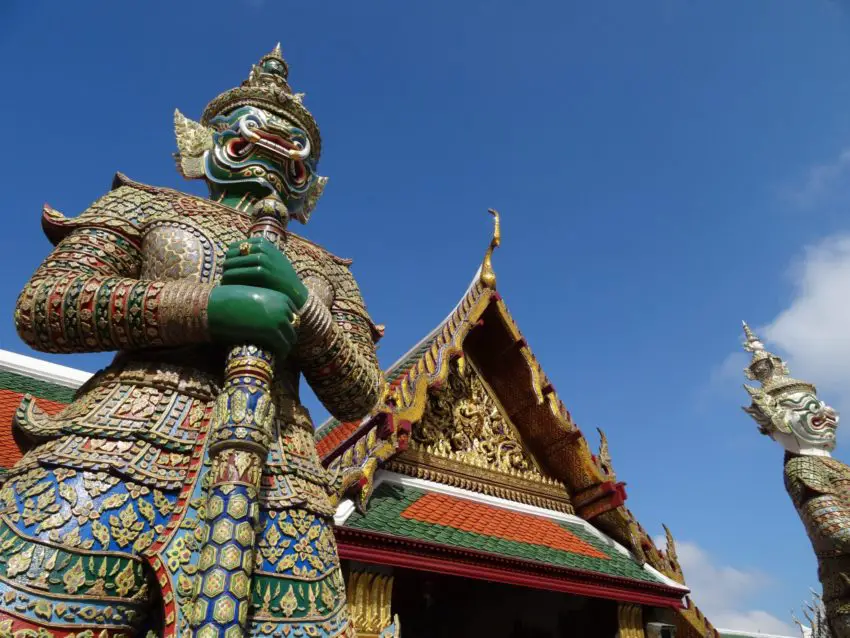The fact that Bangkok’s Grand Palace is arguably the most impressive architectural feat of the Rattanakosin Kingdom and that it contains Thailand’s most sacred Buddhist Temple, makes it a must-see for every first-time visitor to the city.
Since its construction in 1782, it used to be the permanent living place of the Thai King and his family for almost 150 Years until the early 20th century.
Finished in 1782, the complex features several magnificent buildings including Wat Phra Kaew (Temple of the Emerald Buddha), which contains a beautiful Emerald Buddha Statue dating back to the 14th century, as well as a variety of impressive palatial buildings.
Read on for everything you need to know about visiting the Grand Palace.
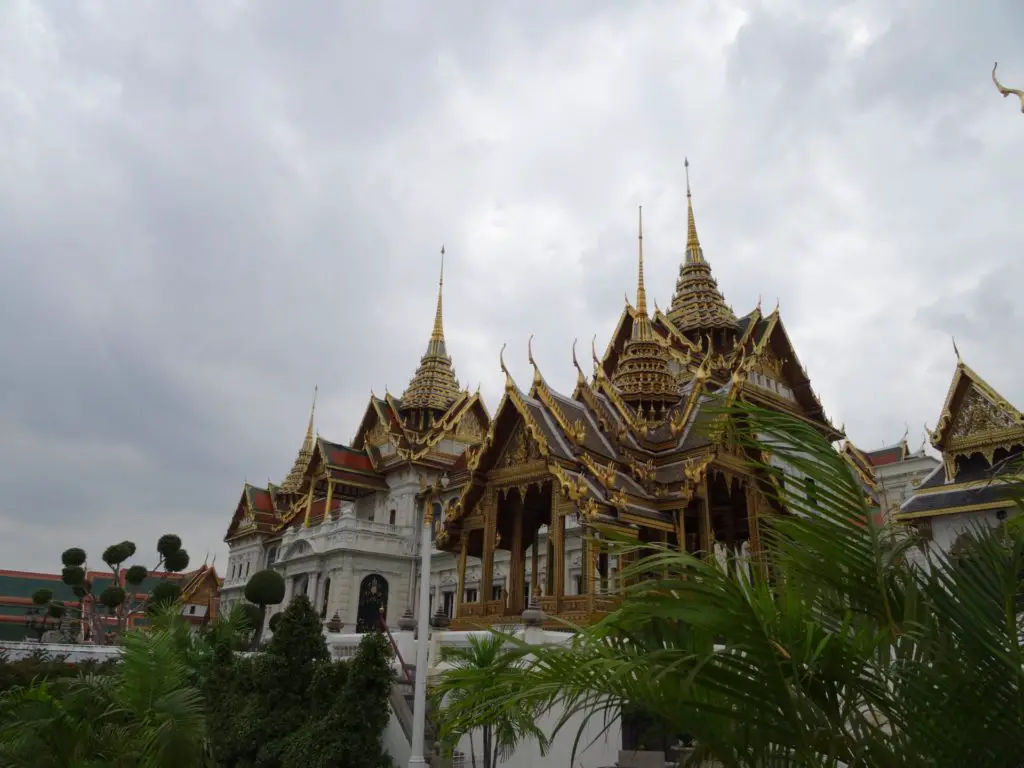
This post may contain affiliate links and I might earn a small commission at no additional cost to you. For more info click here.
What are the Opening Times for Bangkok’s Grand Palace?
The Palace is open daily from 8:30AM to 3:30PM. Be sure to check here if the times are still up-to-date before you go. Due to its popularity, the palace area is usually crowded, so I recommend getting there at opening time, preferably on a week-day, to avoid the worst of the crowds.
Is there a Dress Code for Bangkok’s Grand Palace?
There is – because it’s simultaneously one of Thailand most important religious and historical sites, modest clothes are a requirement to even be allowed into the premises. Avoid short pants, sleeveless shirts and the like. The full list of prohibited clothing items can be found here.
Bangkok Grand Palace Entrance Fee
Entrance for Non-Thai Visitors is 500฿, which is pretty steep, but it’s a large complex, and you can very well spend three or more hours here. For Thai citizens, the entrance is free. Notice, that a ticket to the Grand palace also gives you free admission to Dusit Palace for about a week, so don’t get rid of your ticket after the visit if you plan to go there.

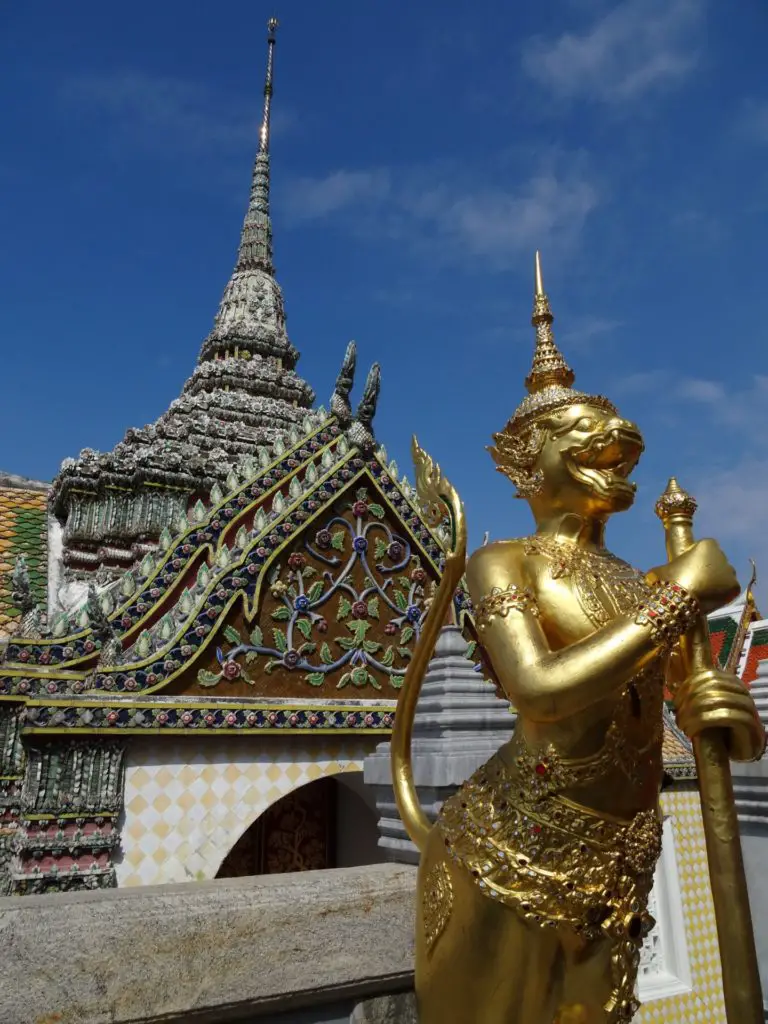
How to get to Bangkok’s Grand Palace
The palace is situated in the Ko Ratanakosin Neighborhood directly east of Chao Phraya River and south of the Khao San Road Area. If you stay in this popular touristic area, you can simply walk to the palace in about 15 minutes. Otherwise, every Taxi and Tuk-Tuk Driver in the city knows the location of Bangkok’s most famous landmark.
If you prefer to get there by public transport, you could take the River Taxi along Chao Phraya River to the stop at Tha Chang Pier, which is directly west of the Palace Grounds. If you’re traveling by BTS Skytrain, you can connect to the River Taxi at Saphan Taksin Station on the dark green Silom Line.
Another option would be to take the MRT Subway to Sanam Chai Station, from where a 15-minute walk north along Th. Sanam Chai takes you to the entrance of the palace.
Finally, the closest Public Bus Stop is Sanamluang (Opposite Wat Phra Kaew) – you can check the connection from where you want to leave on this site.
Exploring Wat Phra Kaew and the Grand Palace
Visiting Wat Phra Kaew
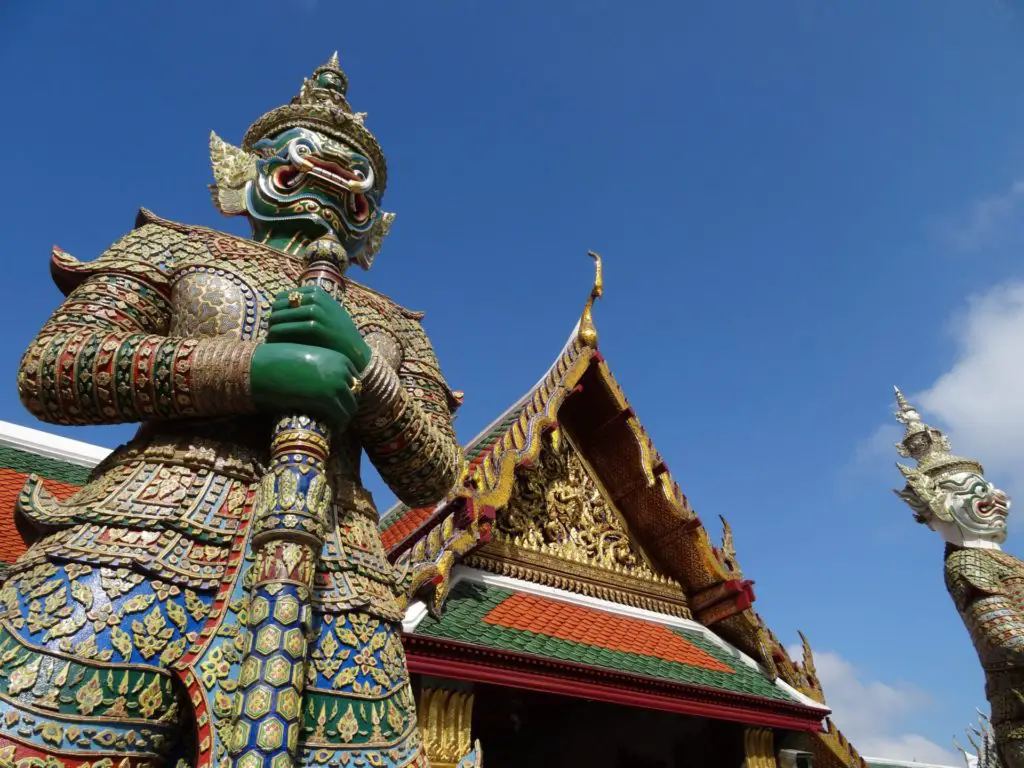
The main entrance to the complex is from the north through Wiset Chai Si Gate in the outer wall. From there, the first area you’ll visit after purchasing your ticket is Wat Phra Kaew, the famous Temple of the Emerald Buddha.
Even if you’ve already visited a score of Thai temples, this one is bound to impress with its elaborate architecture and beautiful murals. You’ll enter the temple through gates guarded by colourful pairs of Yaksha, guardian deities from Buddhist and Hindu Mythology.
Central Buildings of Wat Phra Kaew
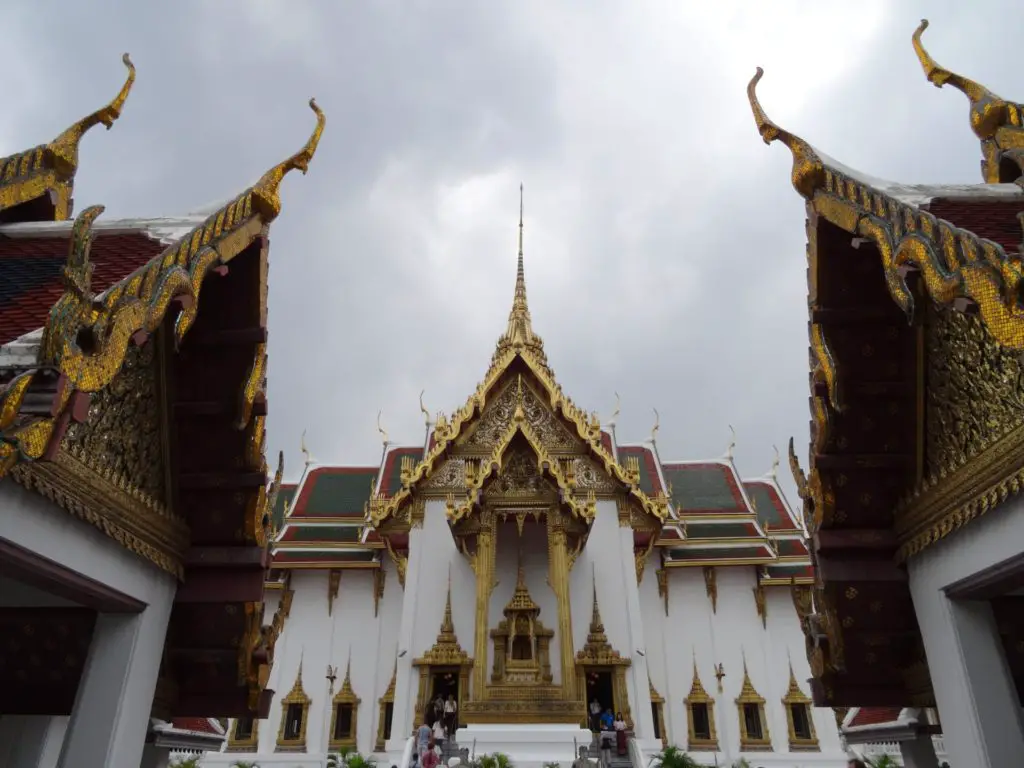
The famous Statue of the Emerald Buddha, depicting the Gautama Buddha in a lotus position is fashioned from either jade or jasper (rather than actual emerald) and can be found inside the Phra Ubosot (ordination hall), which is the big building at the southern end of the temple complex.
Clad in a golden robe and surrounded by depictions of celestial deities, it’s a beautiful piece of religious art. The centre of the court is dominated by three impressive spires – the golden Phra Siratana Chedi (Stupa) and the glazed steeples of the library and royal pantheon buildings.
The Phra Mondop (Library Building) next to the Chedi sports a beautifully decorated exterior wall as well as a porticus supported by twenty glass-adorned columns. Inside, it contains a complete manuscript of the Tripitaka. Don’t miss the Model of Angkor Wat directly to the north of here.
The cruciform building to the east of Phra Mondop is Prasat Phra Thep Bidon (Royal Pantheon Building). It’s impressive from the outside but its interior is usually closed to the public (except for the national holiday on April 6th).
Smaller Buildings and Ramakian Murals
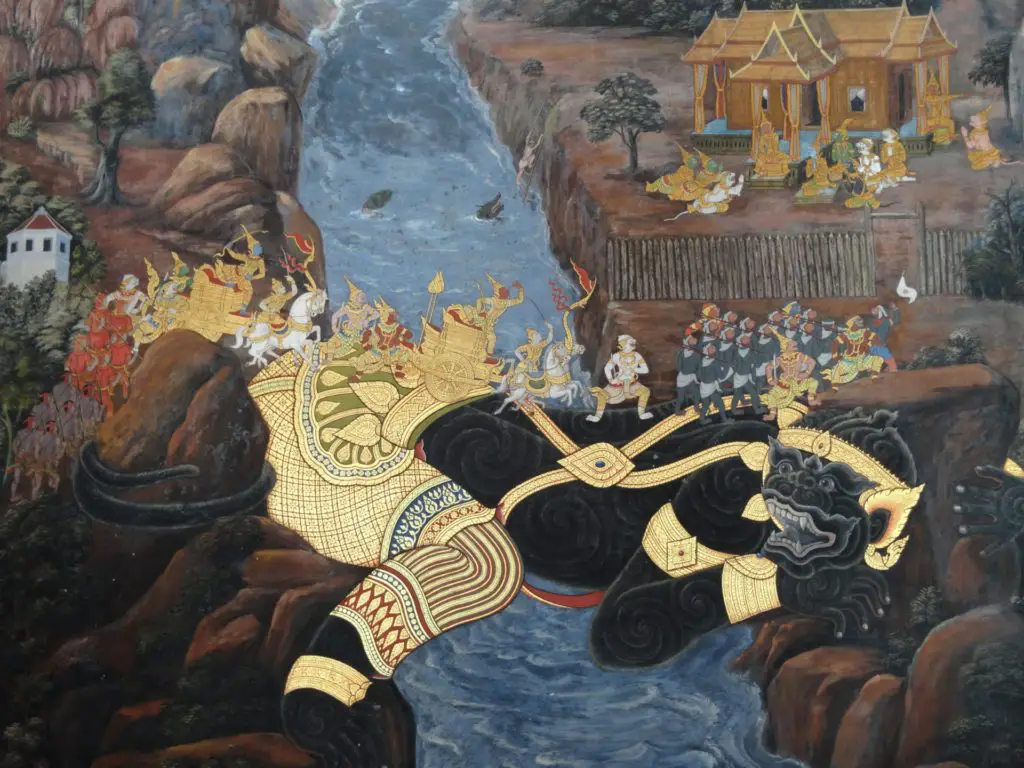
The northern area of the temple complex contains some smaller auxiliary buildings. The westernmost of these is Ho Phra Nak, a royal Mausoleum containing the ashes of the viceroys of the Chakri dynasty.
In the middle you’ll find Phra Sawet Kudakhan Wihan Yot, a Buddha image hall originally built as a vihara, or Buddhist monastery building, while in the north-eastern corner of the area is the Ho Phra Monthiantham (a scripture hall). All of these are beautifully decorated with colorful tiles made of porcelain and mother-of-pearl.
The entire exterior of the complex is surrounded by a covered walkway whose walls are decorated with countless murals depicting scenes from the Ramakian, the Thai national epic based on the Hindu Ramayana.
It tells the story of Prince Rama saving his wife from the clutches of the many-faced demon Ravana. The entire story is retold in 178 panels, each featuring more figures than your average Where’s Waldo book.
The Buildings of the Grand Palace

The rest of the complex is home to some gigantic palace buildings, hardly any of which are still used by the Royal Family on a day-to-day basis. Boromphiman Hall is the royal hall located directly to the south of Wat Phra Kaew within the area known as Siwalai Garden.
Constructed around 1900, it’s built in a Neo-Renaissance stile and wouldn’t be out of place in a Central European Capital. The enormous complex of buildings in the Middle Court to the west of here is the Phra Maha Monthien group, which used to be the living area of the Siamese Kings and their families.
Nowadays, Phaisan Thaksin Hall at the eastern side of the cluster is still used as the place of coronation for the new king. These buildings are not open to the public, so you have to stick to admiring them from the outside.
The Chakri Maha Prasat Hall is the big building to the west, whose northern façade is topped by three golden spires. Built in the second half of the 19th century, its architecture features an eclectic mixture of traditional Thai and European styles.
Inside, you can walk around the grandiose halls which are still occasionally used for state functions to this day, including the Audience Hall and Throne Room.
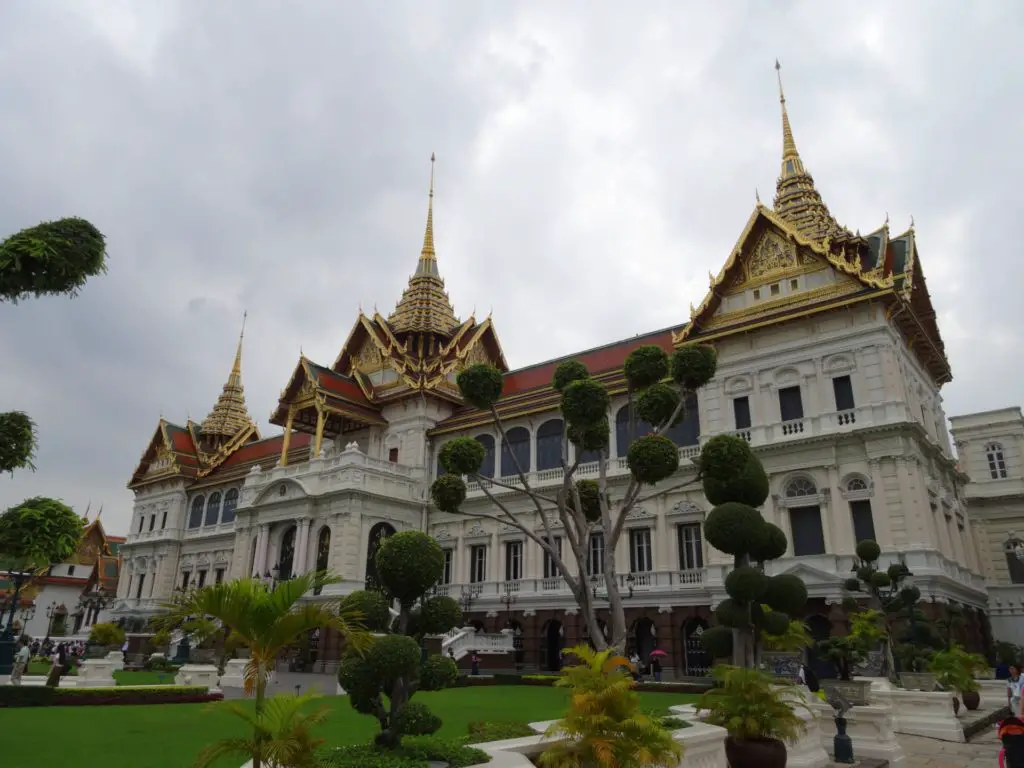
The elaborately steepled and spired building west of here is Dusit Maha Prasat Hall, the oldest extant building in the palace. Ever since the death of Rama I., the building has been used as a place where the bodies of royal family members are laid during the mourning period, and thus it’s considered one of the most important buildings of the complex.
Guided Tour of Bangkok’s Grand Palace
If you would like to get a bit more information about this elaborate place and its fascinating history, you might want to consider getting a guided tour, like this popular one.
If you prefer to time your visit yourself but still want a little more info on all the little hidden details of the area, this self-guided tour would be the ideal choice for you. Apart from in-depth information, you’ll get to see historical pictures and videos of areas you’re not allowed to access as a tourist.
Another great option, especially if you want to use your time as well as possible, would be this more extensive tour of the Ko Ratanakosin Neighborhood, which comes highly recommended and also includes a visit to the Reclining Buddha at Wat Pho as well as a longtail boat tour along the Chao Phraya River.
Map of Bangkok’s Grand Palace Area
You can check the surroundings of the palace and the potential points of entry mentioned above in this map, which also includes some hotels and guest-houses in the area.
The Best Hotels Near Bangkok’s Grand Palace
The Grand Palace is located close to Bangkok’s most popular tourist area around Khao San Road. There are countless places to stay in the area, many of them budget options. I stayed at Born Free Hostel on Soi Samsen 6, a couple of minutes north of Khao San Road, which was good, but I’m sure basically the same level of quality than most other places around.
There are also a couple of mid-range hotels around. Among these, Buddy Lodge comes recommended and has good reviews. You can browse for more options around the palace in the map above.
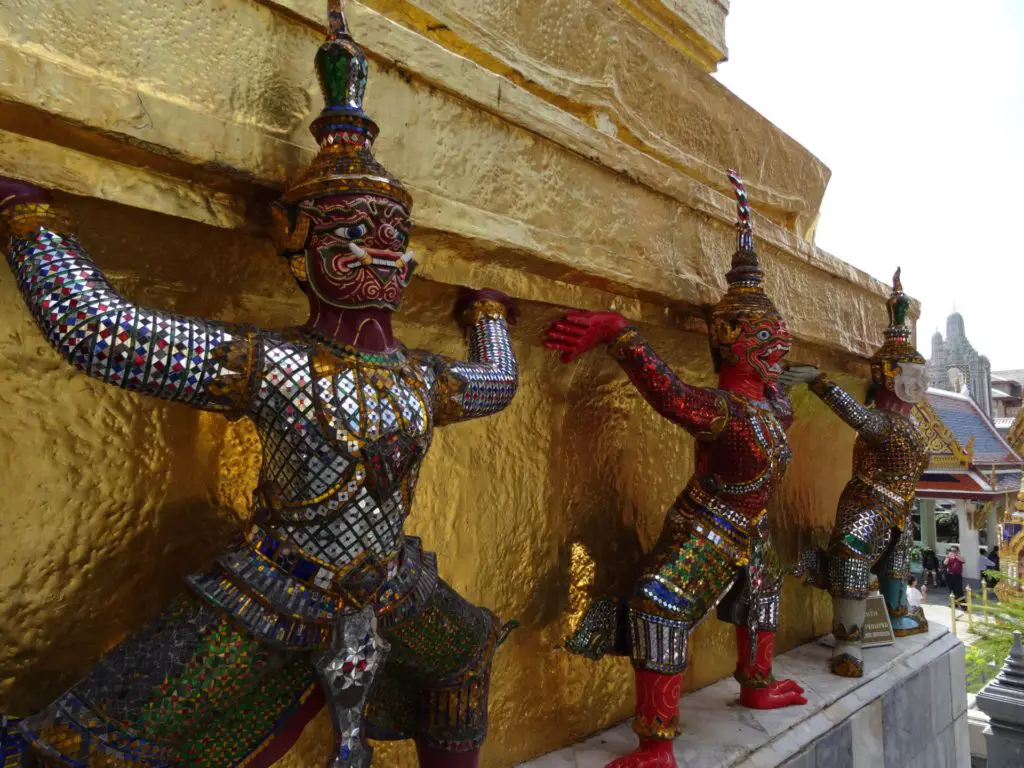
Where to eat near the Grand Palace
There are a couple of restaurants and cafés on the grounds of the Royal Palace but as you might expect, prices tend to be significantly higher than in most other areas of Bangkok.
Your best bet for good value food is to walk north for five minutes from Tha Chang Pier outside the north-western corner of the palace complex. There you’ll find plenty of river-side restaurants serving tasty and cheap local food.
See also
Is Bangkok’s Khao San Road worth visiting?
Dusit Palace and other things to see in Bangkok’s Dusit District
